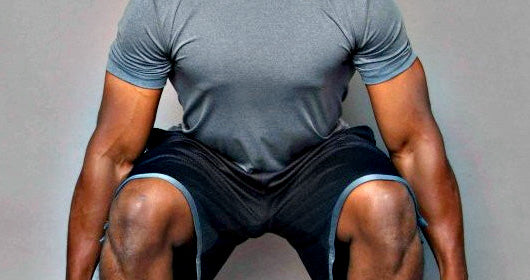
Three sets of jump squats is an excellent way to round off your leg-muscle training. According to sports scientists at AUT University in New Zealand, doing jump squats at the end of a leg-training session raises testosterone synthesis, which speeds up your muscle mass and strength building.
There’s a small stack of studies which suggest that adding plyometrics to your strength training helps increase your strength and above all your power. It seems that exercises like jump squats stimulate your leg muscles in a different way than regular strength training exercises.
The researchers thought that the effect of plyometric training might be due to anabolic hormones. According to scientists, the ratio between the muscle destroyer cortisol and the muscle builder testosterone during and right after a training session predicts the extent to which the training strengthens and enlarges your muscles.
The researchers got 13 rugby players to do four training sessions. The athletes started each session with 4 sets of squats. Then they did 3 sets of jump squats [power] or 3 sets of box squats [strength]. After that they took a short pause and then did another 3 sets of jump squats or 3 sets of box squats.


This way the researchers were able to study the hormonal effects of 4 combinations: strength-strength, strength-power, power-power and power-strength.
Each of the 3 box squat sets consisted of 3 reps with a weight that the athletes could just manage to do 3 reps with. The jump squat sets consisted of 3 sets at 50 percent of the weight with which the athletes could just manage 1 box squat rep.
The testosterone concentration in the subjects’ saliva rose most during the strength-power combination – by 13 percent.
The researchers detected no clear effects on the cortisol levels.
"A complex exercise sequence provided an enhanced anabolic milieu for adaptation compared to other the training methods examined", the researchers conclude. "It is suggested that the superior functional gains associated with complex training are related to the improvements in the hormonal environment."
Source:
J Strength Cond Res. 2010 Aug 10. [Epub ahead of print].


Comments